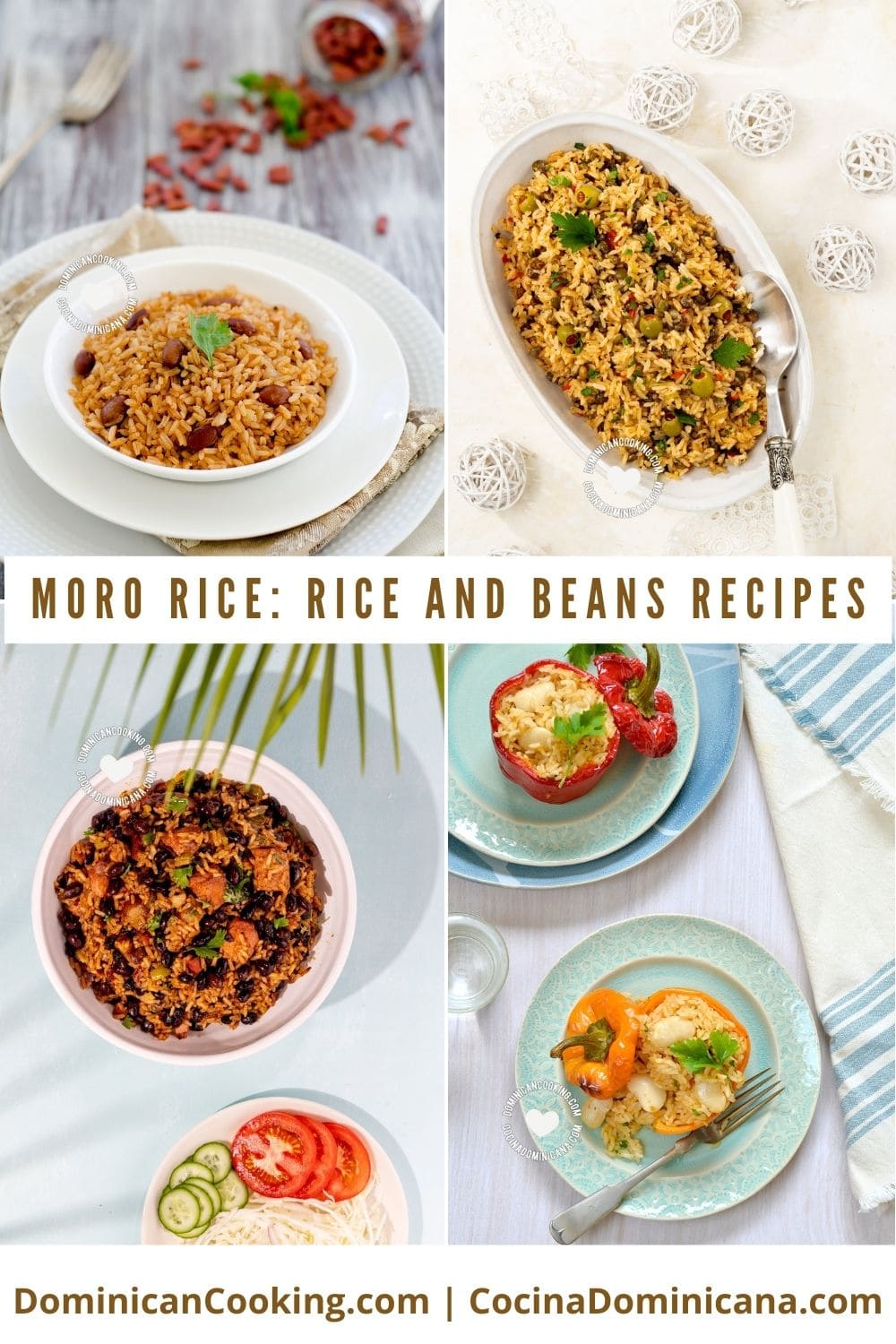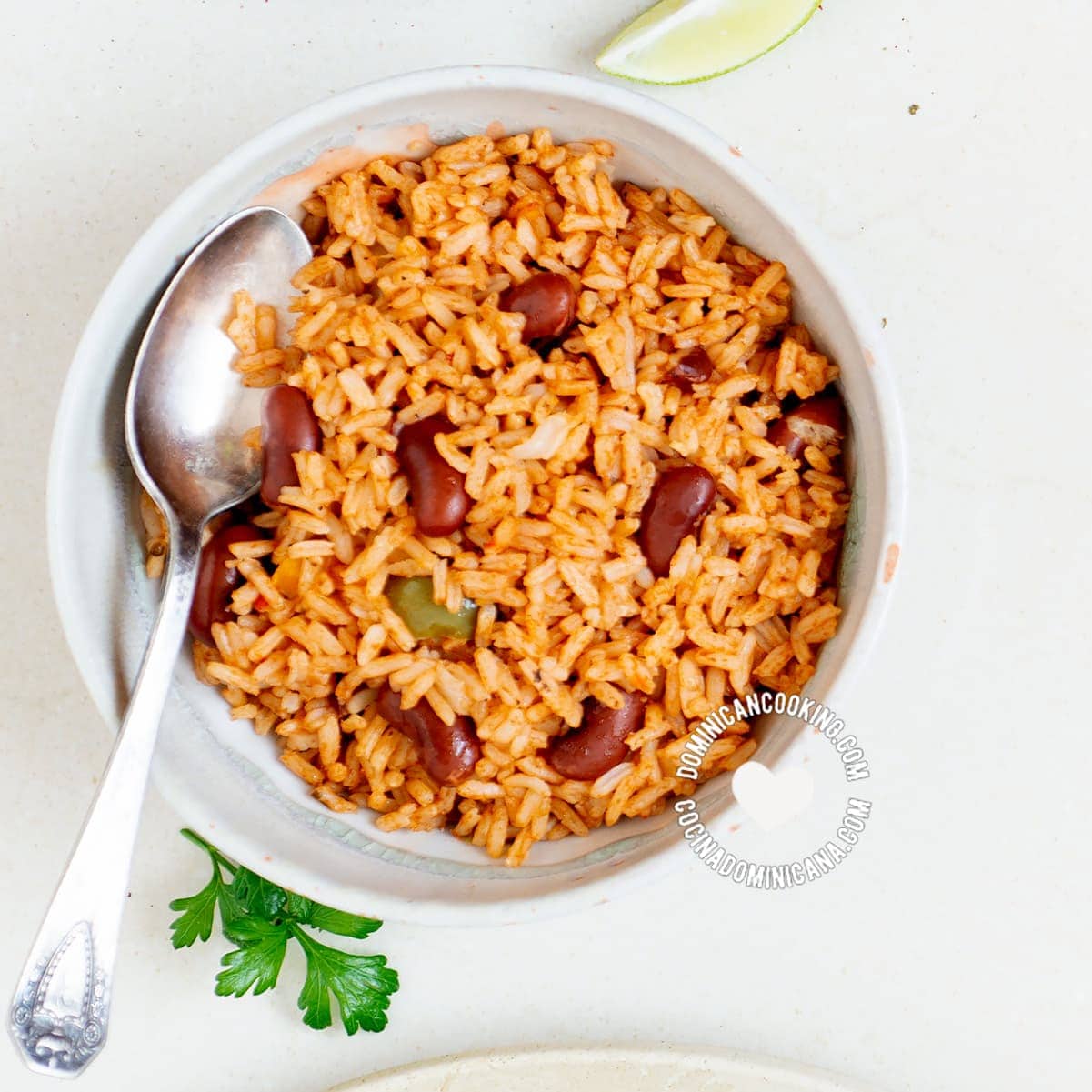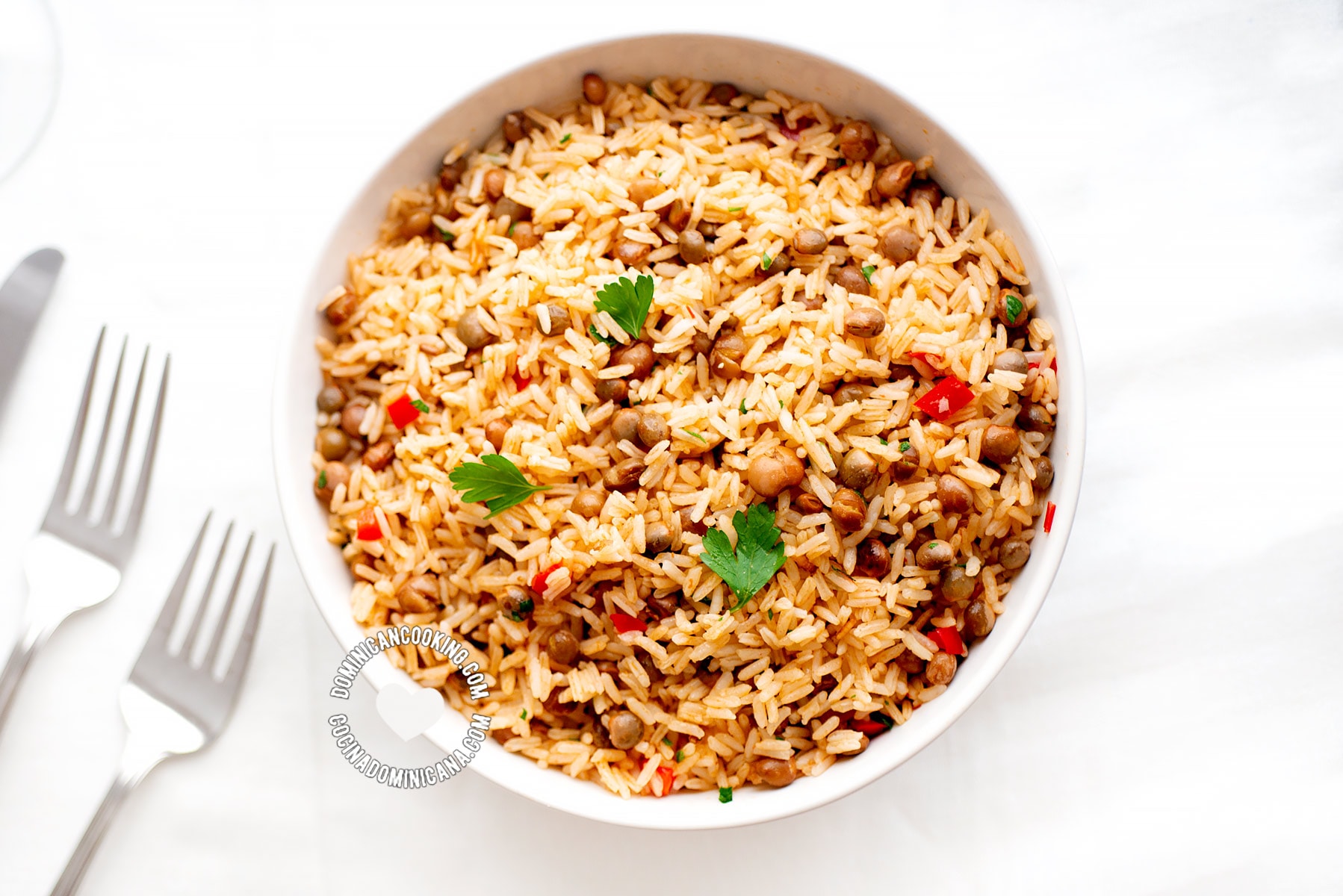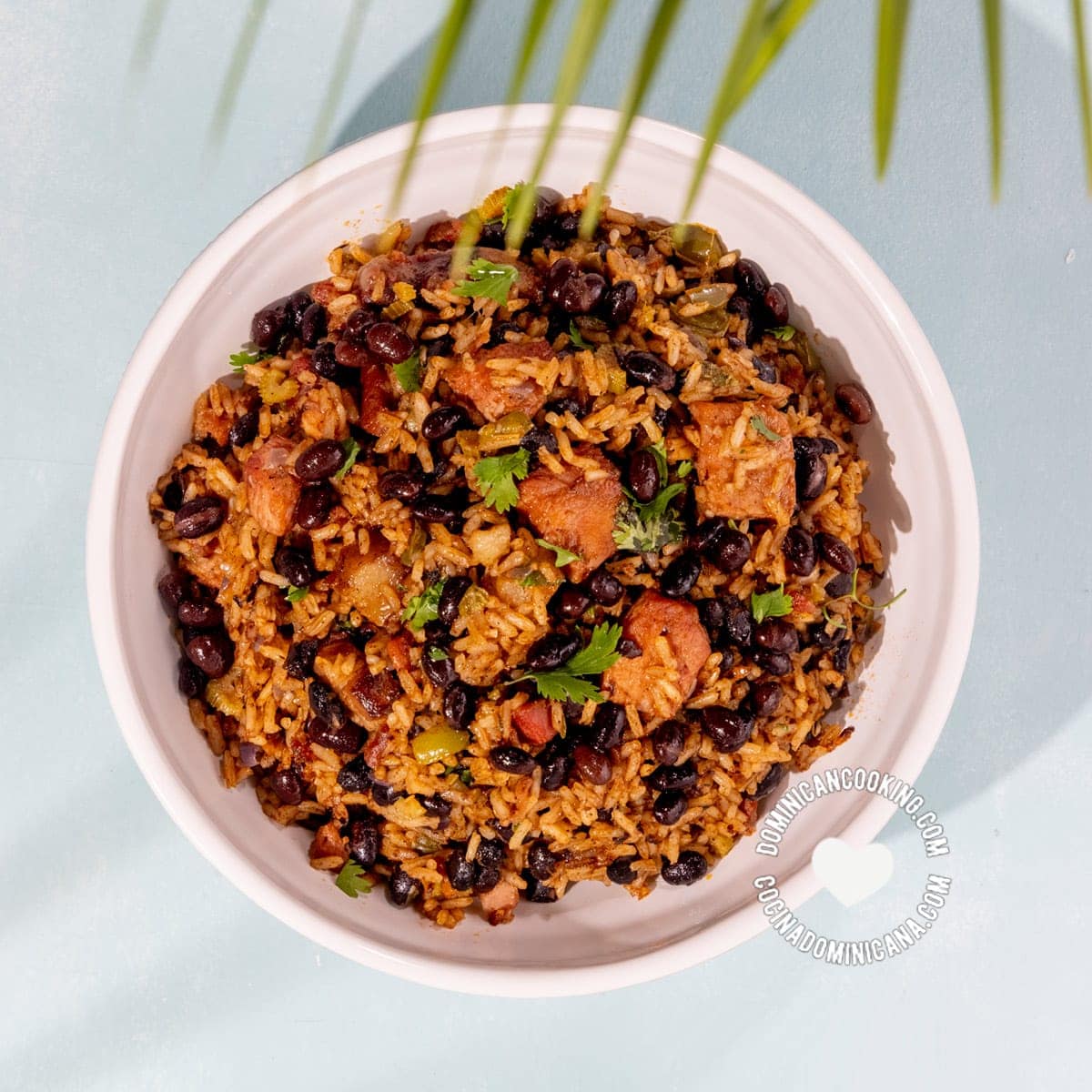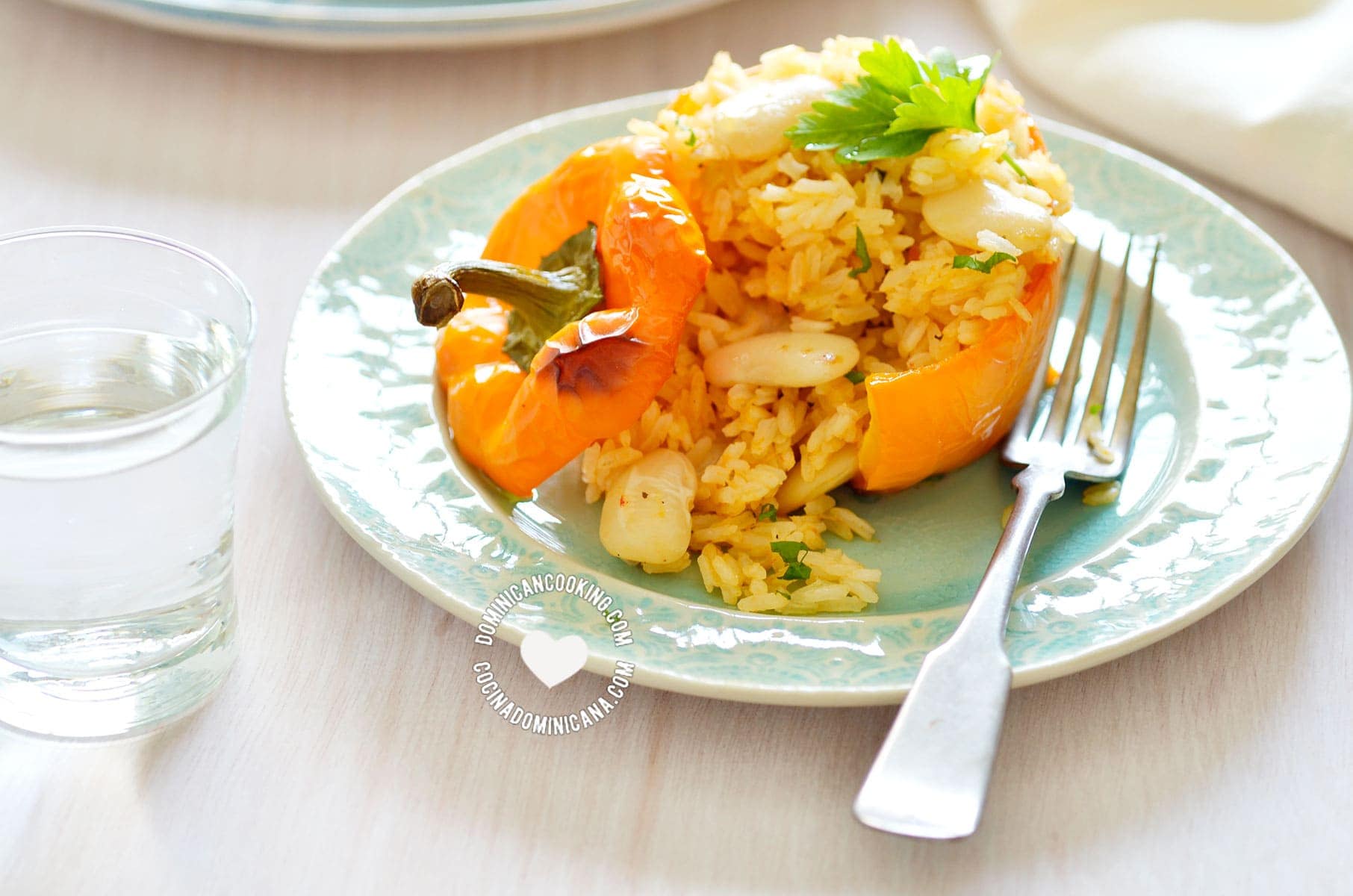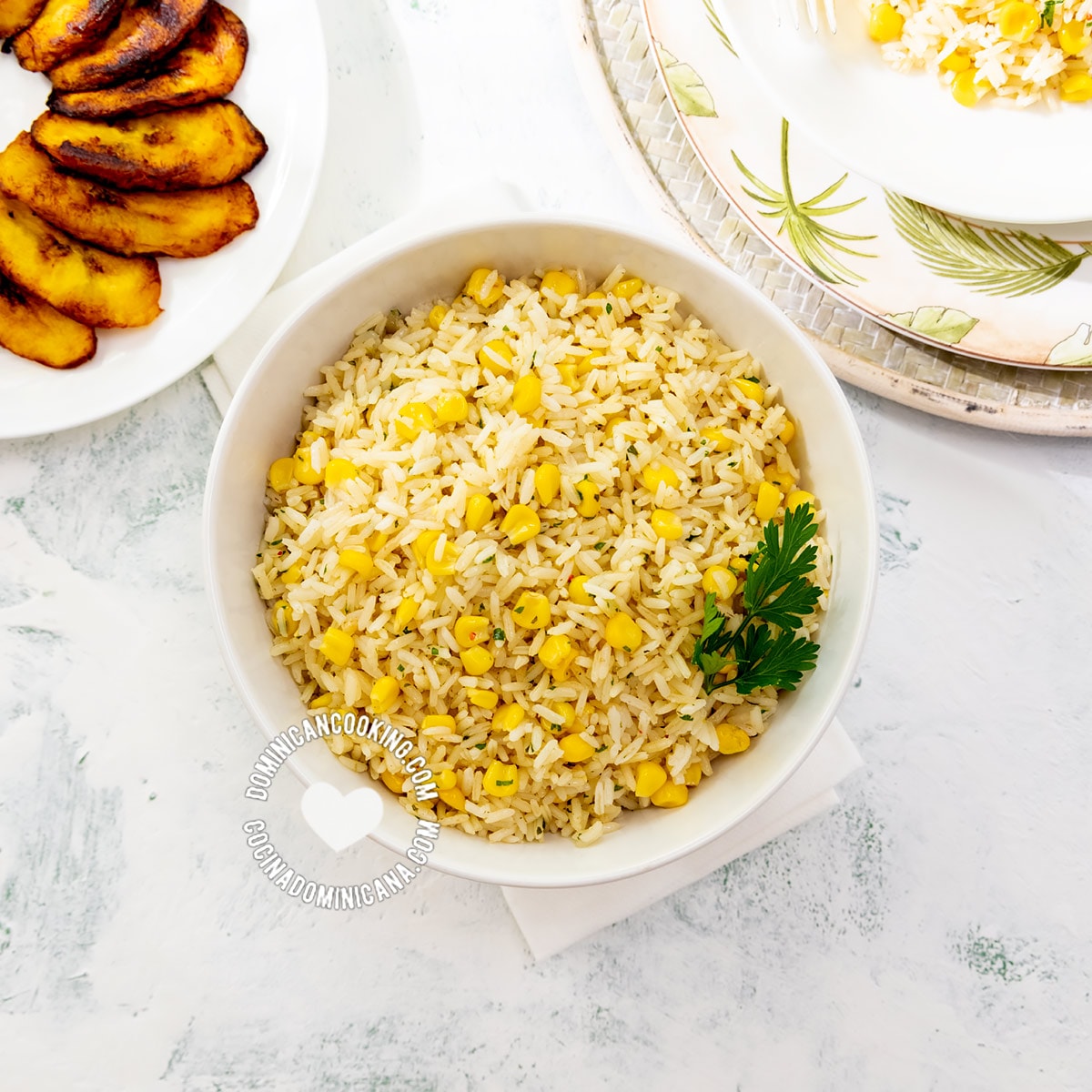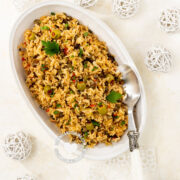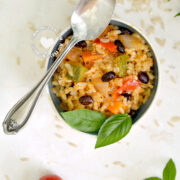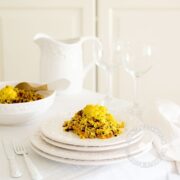Try Moro rice, a simple rice and beans recipe combined into a one-pot dish is part of the gastronomic heritage of most of the Caribbean, including our country. Learn everything about it, and all the ways to make one of our favorite main dishes.
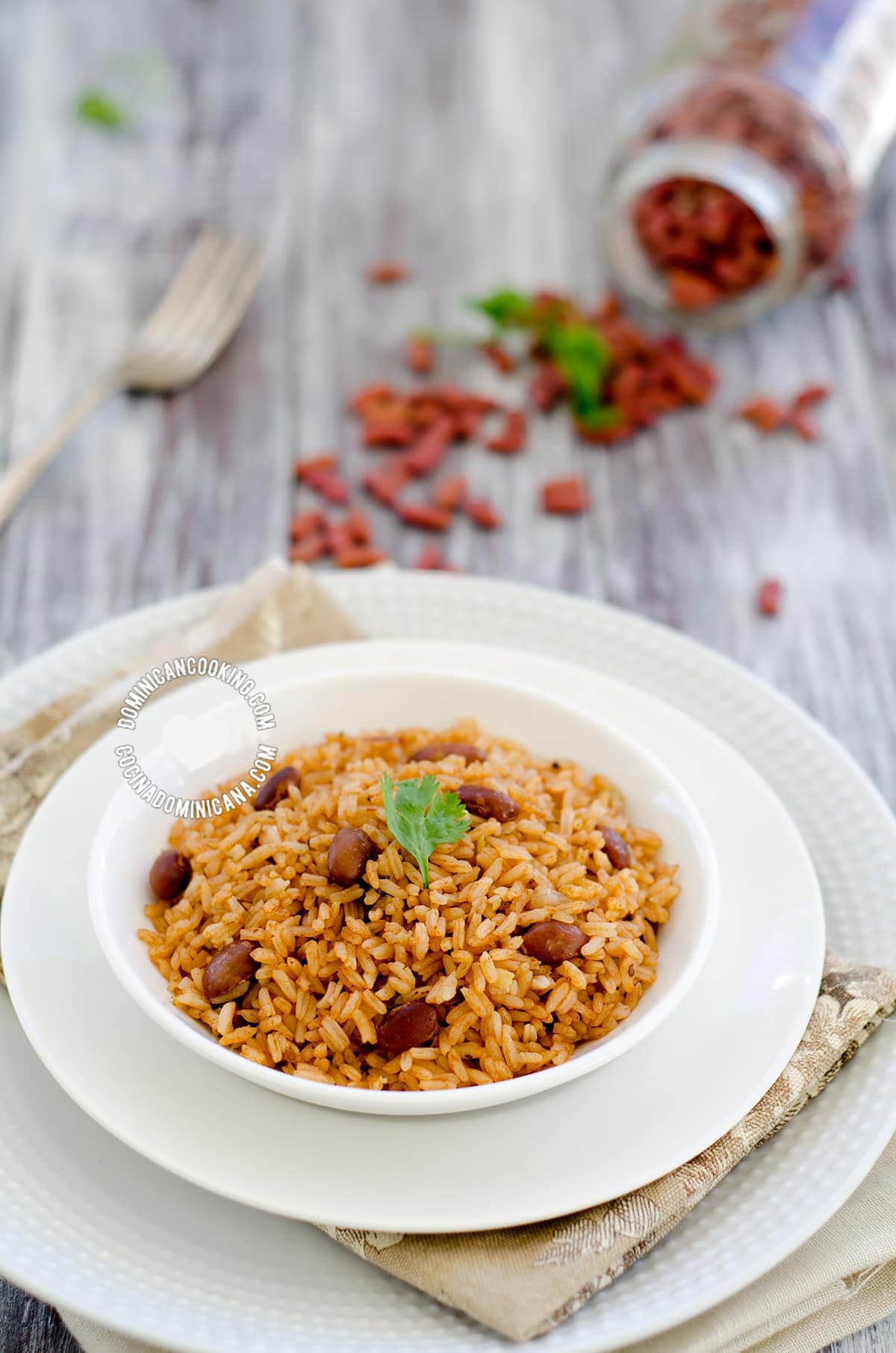
Why we ❤️ it
The advantage of cooking rice and beans – two inexpensive pantry staples – together as one dish is that it shortens the lunch preparation, and – since beans are already a complete protein – you can eliminate the need to cook any other proteins, though we usually do serve some with moro.
It can be made simply with just a handful of ingredients, or more complex and rich by adding more. We have everything here. You'll also find below our side dish suggestions that go great with this easy rice recipe that the whole family will love.
Here I share with you our best, most awesome moro rice options and tips for a foolproof result, and ideas for what to eat with rice and beans.
What's arroz moro?
Aside from rice and beans as separate dishes (as described above), moro (short for moros y Cristianos) is one of the most popular ways for Dominicans to cook and serve rice. But, what's moro?
To make moro, rice and beans are combined and cooked as a one-pot dish. The most popular is moro de habichuelas, made with pinto beans, pink beans, or red kidney beans. Other combinations are possible by using another type of bean, pigeon peas, and even corn. Moro de guandules is a staple of our Christmas feast, and my favorite is a version that contains coconut milk.
Dominican red beans and rice recipe
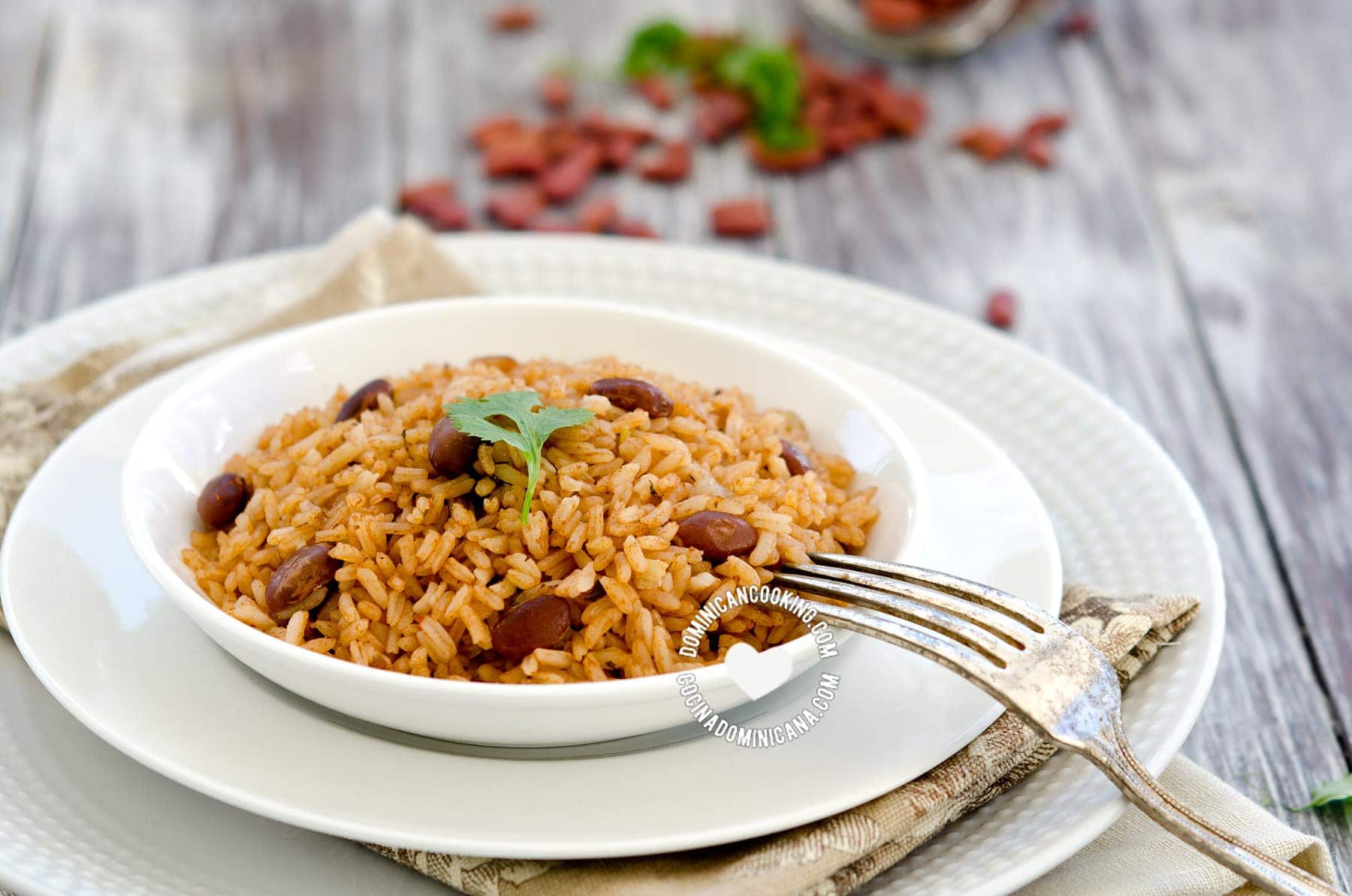
Moro de habichuelas
Rice with pigeon peas or gandules recipe
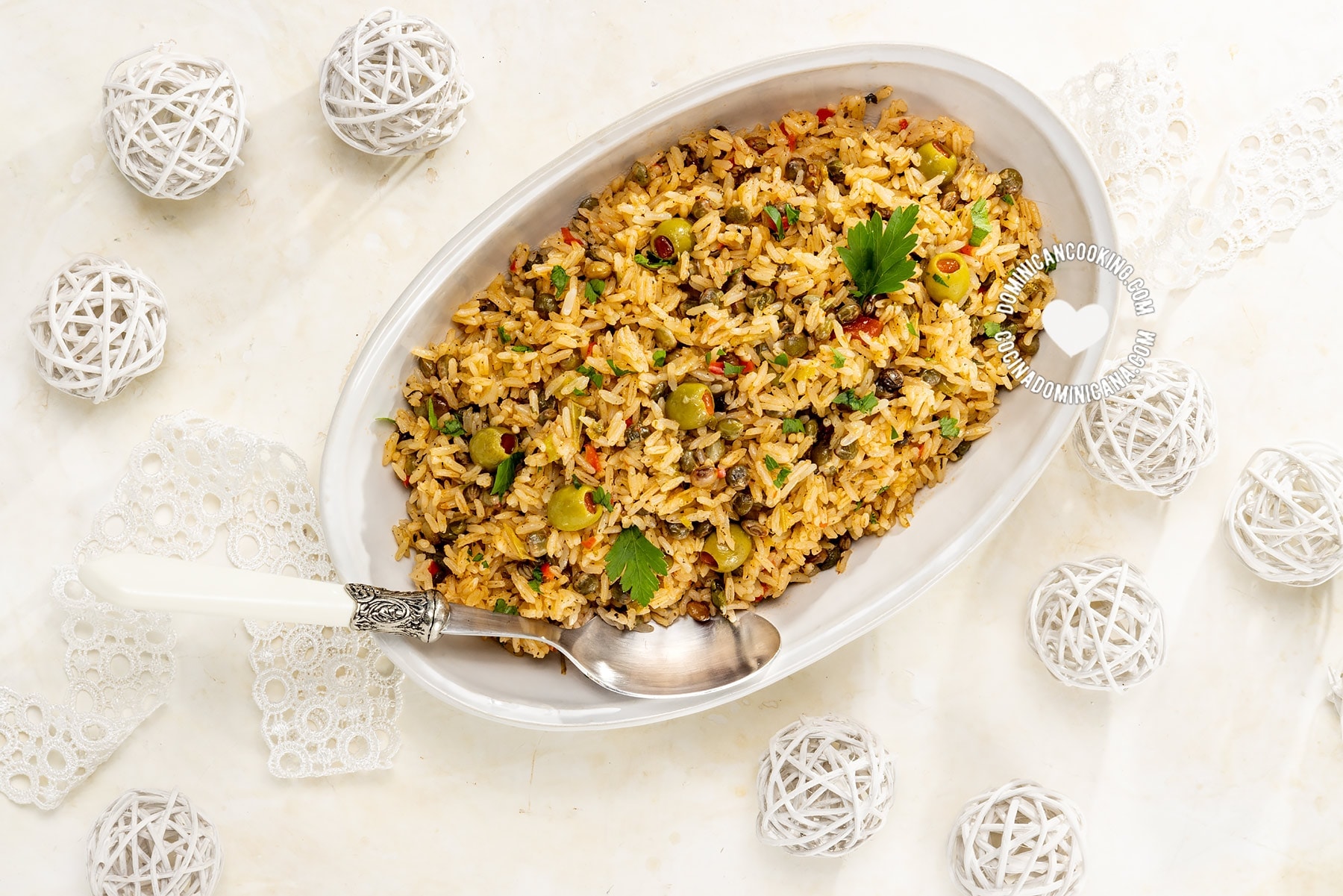
Moro de guandules
Easy black beans, rice, and pork chop dish
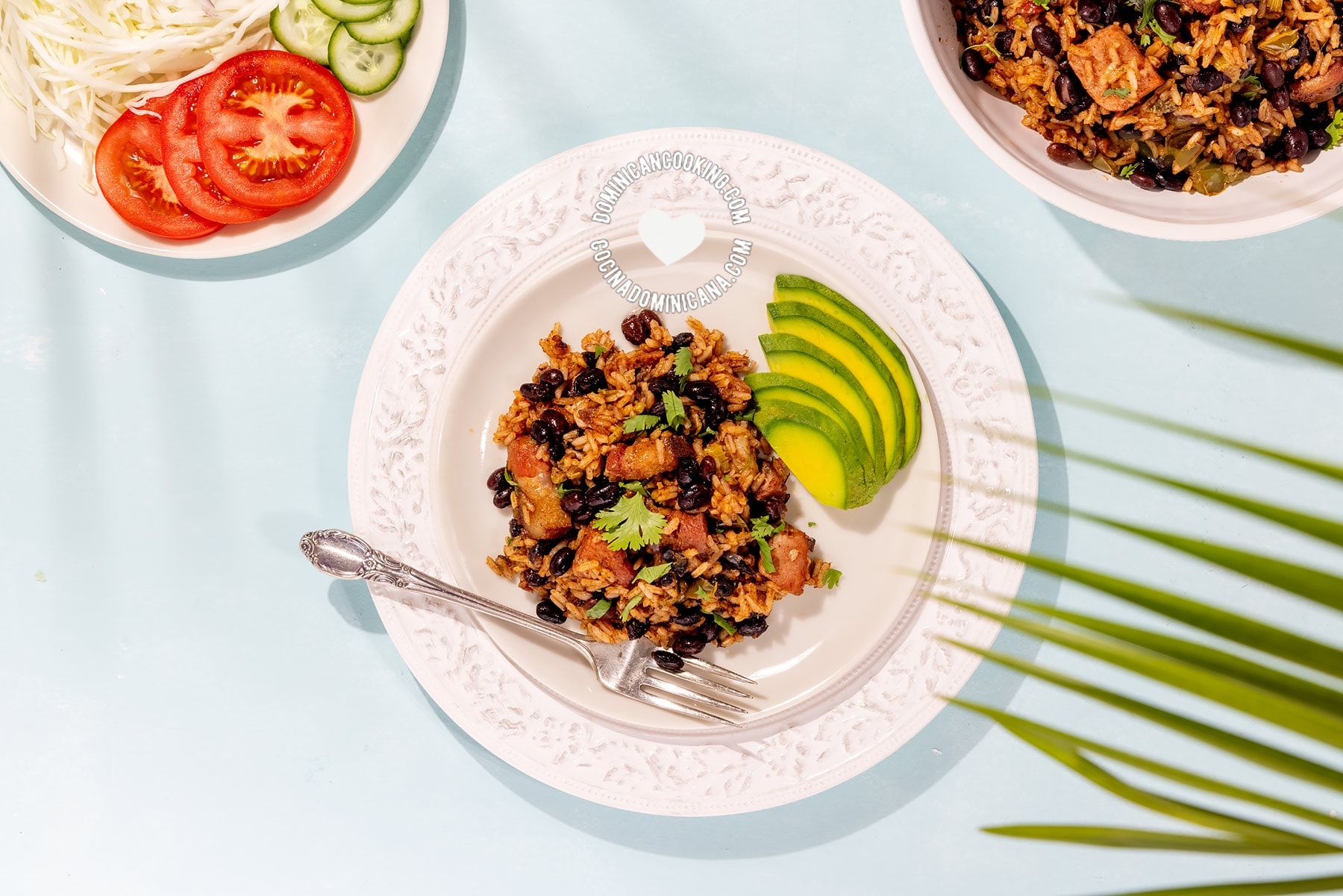
Moro-locrio de habichuelas negras y chuleta
Rice and butter beans stuffed peppers
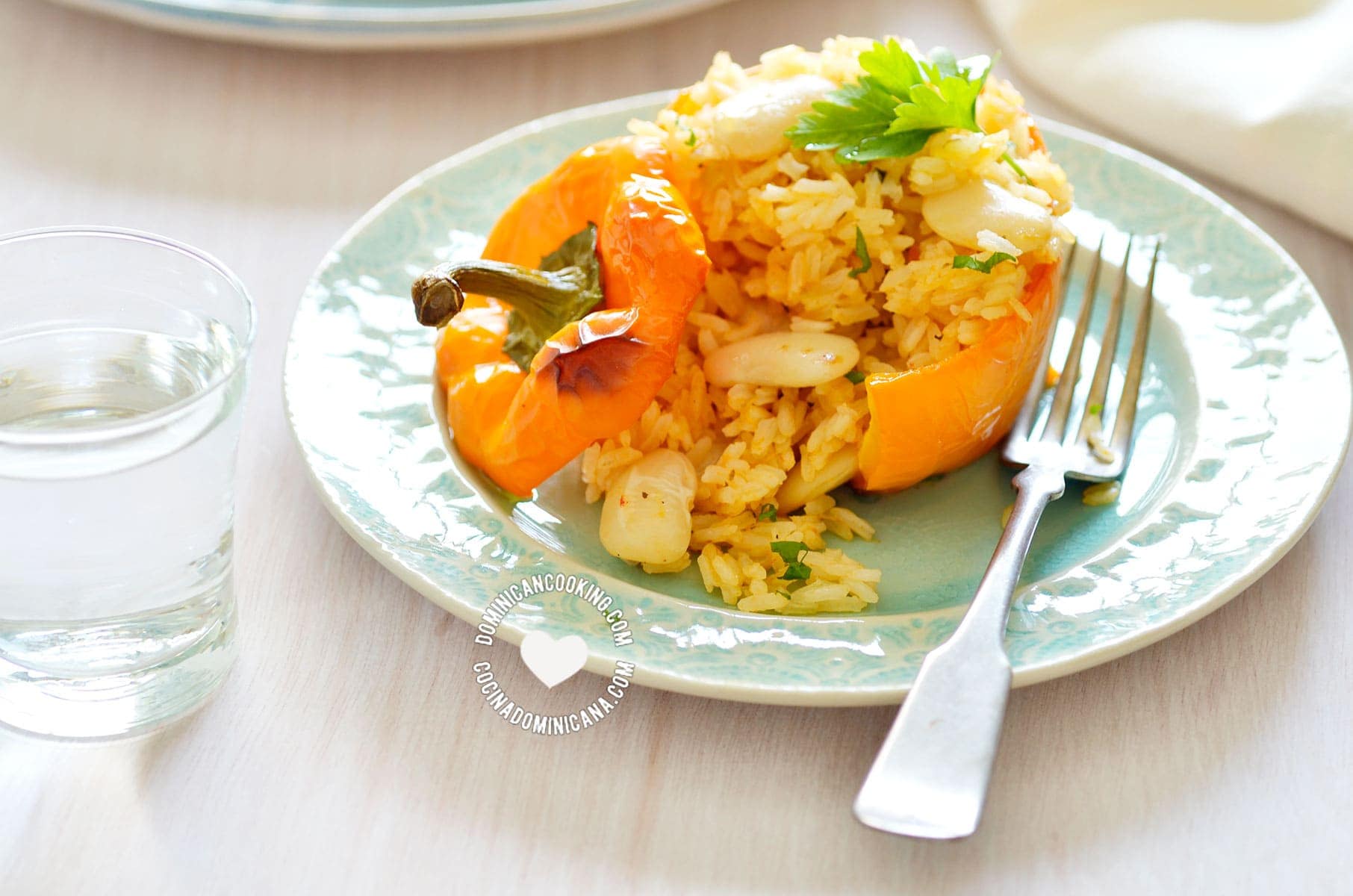
Pimiento relleno de moro de habas
Rice with corn
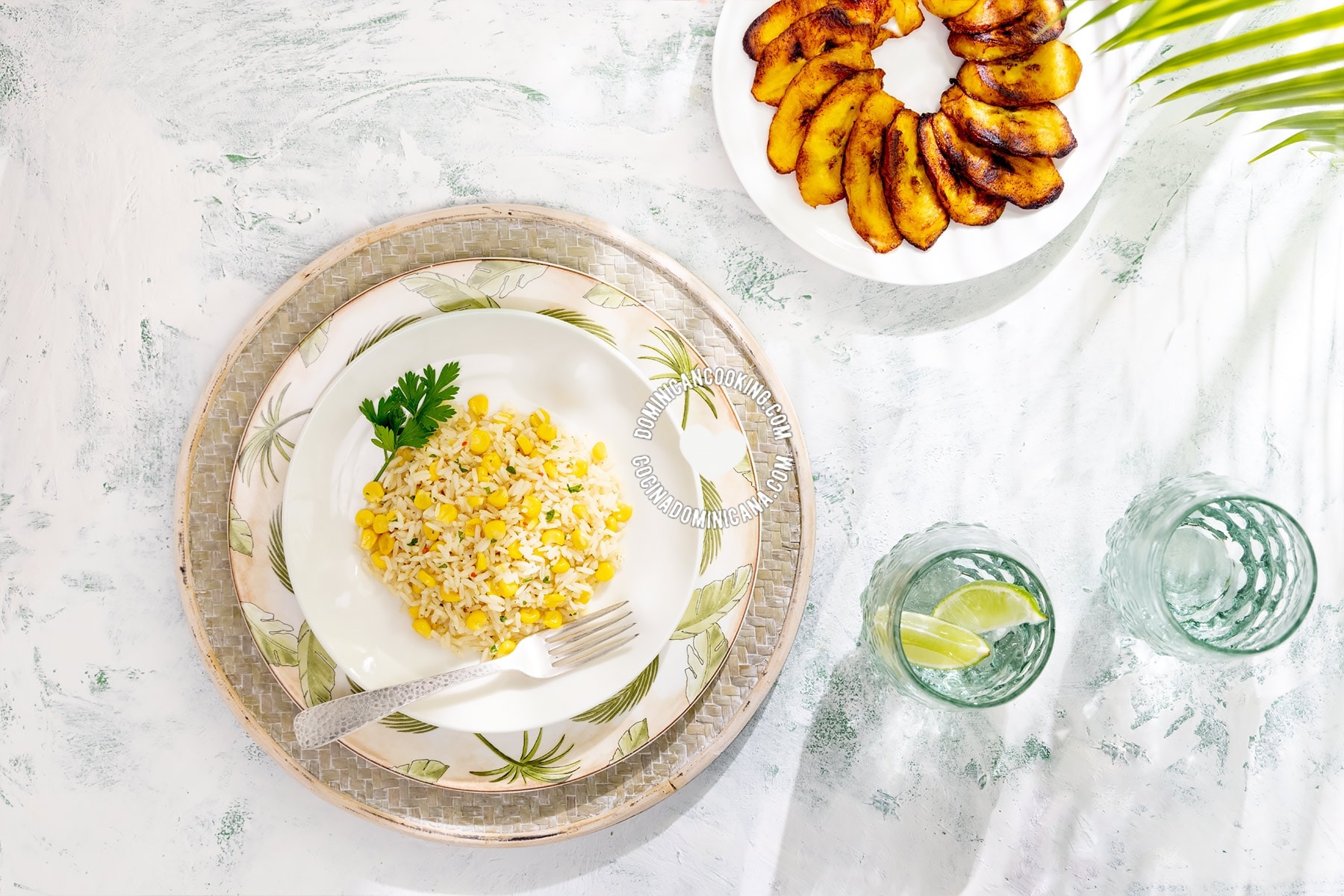
Moro de maíz or arroz con maíz
Type of rice for moro
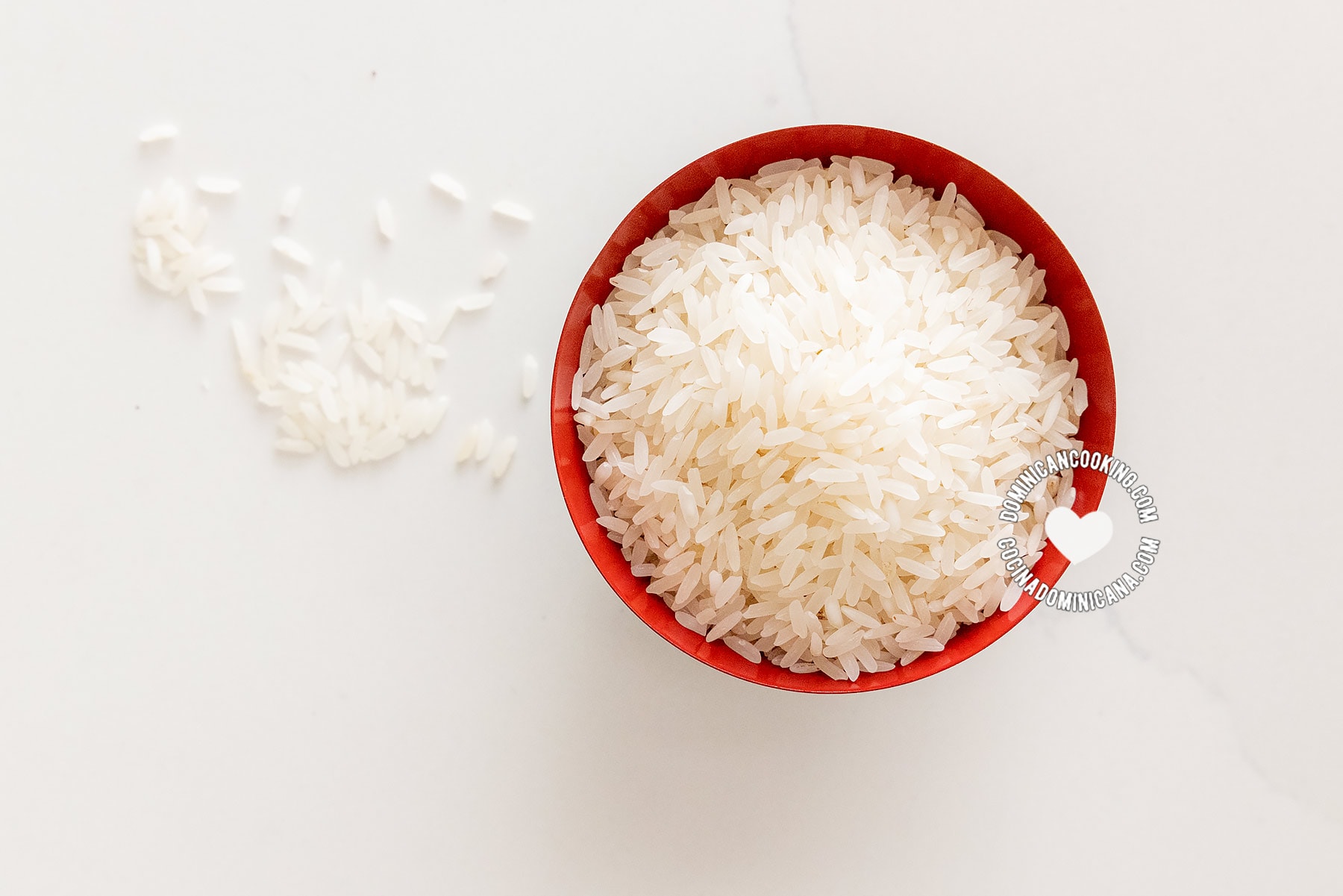
Bowl of raw long-grain (Carolina) rice
For moro rice, you need long-grain rice, which is a kind of rice with a medium starch content and produces "arroz graneado", or rice that cooks through but still keeps firm with separate grains. This is the type of rice used in Dominican cuisine.
You can use long grain brown rice too, in that case, soak the rice in enough water to cover it for two hours beforehand. Drain the water, and use in the recipe as you would regular rice.
What beans to use
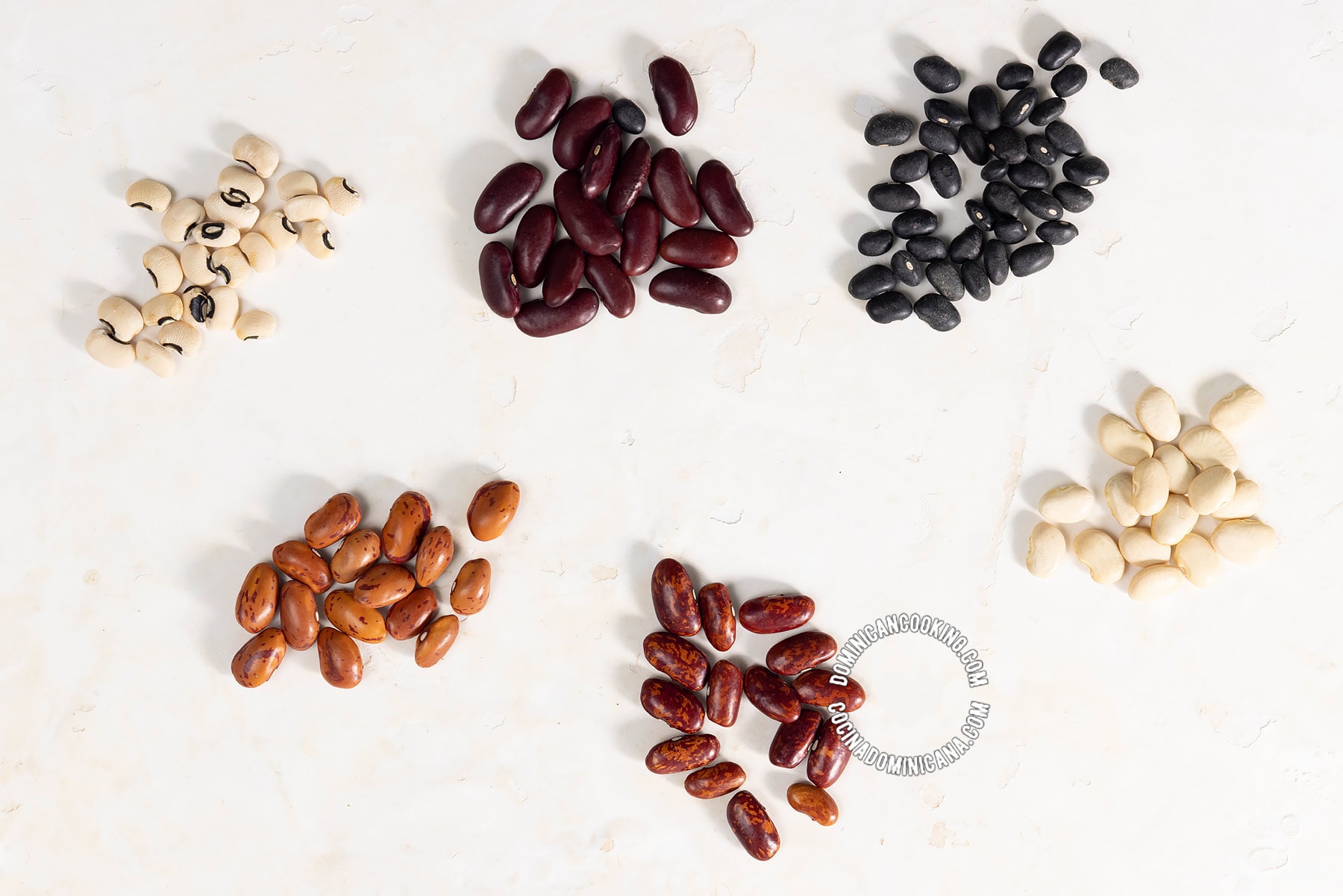
Beans used to make moro rice
For moro you can use dry black beans, red kidney beans, pinto beans, cranberry beans, pink beans, butter beans, or guandules (gandules or pigeon peas). Each version follows almost the same cooking process, except for the time it takes to boil dried beans, which varies from bean to bean. You can boil beans by soaking them overnight (to shorten the cooking time), then boiling them on a regular pot, or – to save time a lot of time – a traditional pressure cooker or an instant pot.
You can also use canned beans to shorten the preparation time.
Beans are a great plant protein, and this makes a great vegan easy dinner or lunch idea.
Tips
For extra flavor, substitute vegetable broth, beef broth, or chicken broth for the 5 cups of water in the preparation above.
The Cuban version of moro – and many Cuban dishes – contain laurel leaves, which is not that common in Dominican cooking, but do add a nice taste, in case you want to try that as your own spin.
What to eat with rice and beans
We serve moro with any of our "guisado" meats or vegetables: Pollo guisado (chicken) is the perfect companion to this rice dish, but so are also Res guisada (beef), Cerdo guisado (pork), Chivo guisado (goat) or Berenjenas guisadas (eggplants) are always great to combine with moro.
Another great choice for vegans is Repollo guisado (stewed cabbage), and Torrejas de berejena (fried battered eggplants) are a great meatless, though not vegan choice.
My favorite salad choices to serve with moro rice are the classic Dominican salad, Ensalada rusa (potato and egg salad), and carrot and cabbage salad.
If you are really going all in, make some Fritos maduros, or Arepitas de yuca.
How to store and reheat
You can store the leftover rice in an airtight container and refrigerate for up to 4 days. To reheat in the microwave, add a couple of tablespoons of water and reheat covered. To reheat on the stovetop, place the rice in a large skillet, add 4 - 5 tablespoons of water, and heat covered over medium heat until it starts to release steam. If it's too dry, you may add a little bit more water.
Origin
Moro in the Dominican Republic and Puerto Rico, Moros y Cristianos and congrí in Cuba, Rice and peas in Jamaica.
Moro, both the concept and the dish exist all over Latin America, to which it came from Spain with the conquistadors. Moro recipes can be found from Ecuador to the Spanish Caribbean and are made in diverse ways depending on the country and region. Each country has its own flavor and combination of ingredients.
Take Cuba for example. The Cuban counterpart of this popular Dominican dish is called "moros y cristianos" or Moors (Muslims) and Christians (a reminder of pre-colonial attitudes), and it still is known by that name in Cuba. It was shortened to just moro in the Dominican Republic.
In Haiti, a very similar rice dish is known as "ris et pois", and is prepared with fewer ingredients than the Dominican version. In Jamaica, it is known as "rice and peas".
Recipe
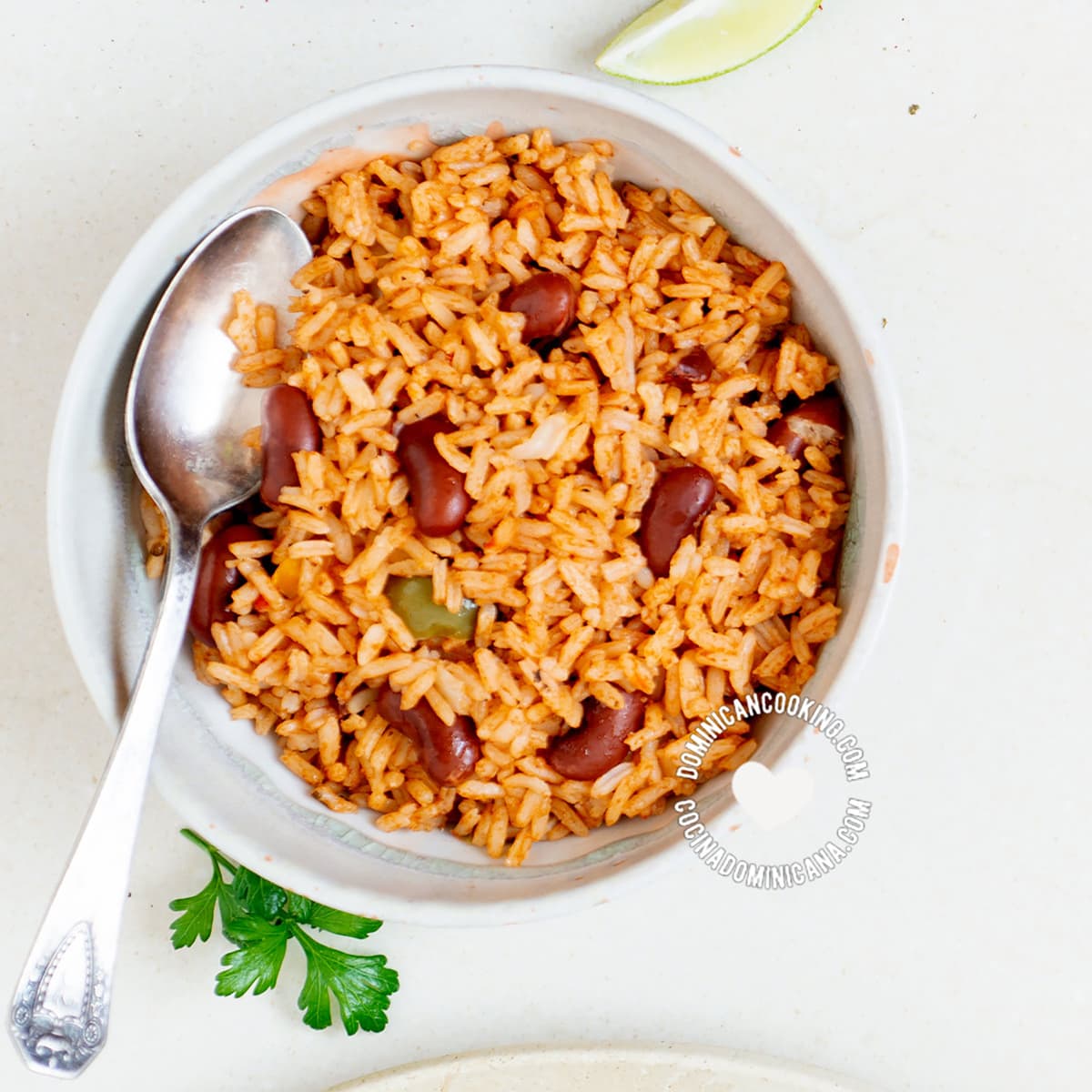
How to Make Moro Rice (Simple Rice and Beans Recipe)
Ingredients
- 5 tablespoons vegetable oil, (I prefer olive oil) divided
- 1 handful of chopped fresh cilantro, or parsley, or both combined
- 1 tablespoon mashed garlic
- 1 red onion, diced (optional)
- ½ teaspoon dry thyme leaves, or 3 sprigs of fresh thyme (optional)
- ¼ cup chopped celery
- ⅛ cup pitted green olives, sliced (optional)
- 1 teaspoon oregano, dry, ground
- 1 cubanela (cubanelle pepper), diced (or red bell pepper or green bell pepper)
- ⅛ cup capers, (optional)
- 2 tablespoons tomato sauce
- 2 cup boiled beans, whatever kind of beans you chose, see above
- 2 teaspoons salt, (or more, to taste)
- 4 cup rice, long-grain white rice, Carolina
Instructions
- Heat half the oil (2.5 Tbsp) in a cast aluminum or cast iron pot over low heat and sauté cilantro, garlic, diced onion, thyme, celery, olives, oregano, cubanela, capers.
- Cook and stir for a minute, or until the ingredients release their aroma. Stir in the tomato sauce. Add beans, also while stirring, and season with salt.
- Once heated through, add 5 cups of water and bring to a boil over medium-high heat Try the mixture and add salt to taste before proceeding, bear in mind that the rice will absorb some of the salt, so don't low-ball it).
- Once the water reaches a rolling boil stir in the dry rice, and simmer stirring frequently to prevent the rice mixture from sticking to the bottom and scorching. Make sure to remove the rice that sticks to the bottom.
- When the water has evaporated cover with a tight-fitting lid and simmer over very low heat for 15 minutes. After the 15 minutes have passed uncover, drizzle the remaining oil, and stir.
- Cover again for another 5 minutes. After this, the rice should be firm but tender inside. If necessary, cover and leave another 5 minutes over very low heat (if at this point it looks too dry add ¼ cup of boiling water before stirring and covering.
- Remove from the pot and serve.
Video
Nutrition
Nutritional information is calculated automatically based on ingredients listed. Please consult your doctor if you need precise nutritional information.
Published May 30, 2022, and last revised


